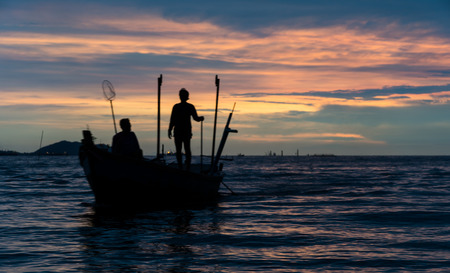Introduction to Freshwater Bodies and Fisheries in India
Freshwater bodies such as rivers, lakes, ponds, tanks, and reservoirs are the lifelines of Bharat’s vibrant aquatic ecosystem. These resources are not just geographical features; they act as crucial support systems for millions of local fishing communities, forming the backbone of rural livelihoods and ensuring food security across the nation. From the mighty Ganga and Yamuna in the north to the Krishna and Godavari down south, these waterbodies sustain diverse fish species and nurture complex biodiversity. The unique climatic zones across India—from Assam’s wetlands to Kerala’s backwaters—have fostered a rich tradition of inland fisheries that is deeply woven into local culture and economy. For generations, families have depended on these waters for daily sustenance, traditional occupations, and even spiritual practices. In fact, freshwater fisheries contribute significantly to Bharat’s total fish production, supporting both small-scale artisanal fishers and larger cooperative societies. Moreover, these ecosystems maintain ecological balance by acting as habitats for countless flora and fauna. Any threat to their existence directly impacts not only aquatic life but also disrupts the intricate web of rural employment, nutrition, and socio-economic stability in India.
2. Understanding Encroachment in the Indian Context
Encroachment of freshwater bodies is a critical and highly debated issue across India, impacting not only the environment but also the livelihoods of lakhs of people dependent on fisheries. To truly grasp the scale and nature of this challenge, it’s essential to analyse what constitutes “encroachment” in the Indian context, identify common modes of encroachment, and understand how these manifest differently across various states with their own local nuances and terminologies.
What Constitutes Encroachment?
In India, encroachment refers to the illegal occupation or unauthorized use of land or waterbodies such as lakes (tanks), ponds, wetlands, and riverbeds. These actions disrupt the natural flow and health of freshwater systems. The legal definitions may vary from state to state, but typically include activities like constructing buildings, dumping debris, converting waterbodies for agriculture, or even reducing catchment areas for private or commercial gain.
Common Modes of Encroachment
| Mode | Description | Local Terminology/Examples |
|---|---|---|
| Urbanisation | Expansion of cities leading to construction over lakes, tanks, wetlands and other waterbodies. | Tamil Nadu: “Eri” (tank) filling for real estate; Maharashtra: “Talao” encroachments in Mumbai suburbs |
| Agricultural Expansion | Conversion of lake beds and marshes into paddy fields or vegetable plots during dry seasons. | West Bengal: “Bheri” (traditional fish ponds) conversion to cropland; Tamil Nadu: Tank bunds used for cultivation |
| Real Estate Development | Illegal plotting and sale of land originally classified as part of a lakebed or wetland area. | Maharashtra: Wetlands around Navi Mumbai converted for housing projects; Tamil Nadu: Eri lands sold as plots |
State-Wise Examples and Local Nuances
Tamil Nadu:
The word “Eri” refers to traditional tanks that have been crucial for irrigation and fisheries for centuries. In recent decades, rapid urbanisation in Chennai and tier-two cities has seen widespread “eri poramboke” (tank land) encroachments by both informal settlements and organized real estate developers. These encroachments often lead to flash floods during monsoons due to reduced storage capacity.
West Bengal:
“Bheri” fishing—unique shallow water aquaculture systems—are frequently threatened by illegal conversion into agricultural land or real estate development near Kolkata’s peri-urban zones. The East Kolkata Wetlands, a Ramsar site, face constant pressure from landfill expansion (“bhumi bharati”) and unauthorised housing schemes.
Maharashtra:
The Mumbai Metropolitan Region has witnessed rampant filling up of “talaos” (ponds) for slum expansion and construction projects. In rural districts like Pune and Nashik, riverbanks are often encroached for sugarcane cultivation (“wadi bandharan”), directly affecting groundwater recharge zones crucial for local fisheries.
Summary Table: Regional Terminologies & Impacted Waterbody Types
| State | Local Term for Waterbody | Main Encroachment Activity |
|---|---|---|
| Tamil Nadu | Eri (Tank) | Urbanisation, Real Estate Plotting |
| West Bengal | Bheri (Fish pond) | Agriculture Conversion, Landfill Expansion |
| Maharashtra | Talao (Pond), Riverbank | Slum Expansion, Sugarcane Cultivation |
This multifaceted problem demands region-specific strategies rooted in an understanding of local terminology, community practices, and governance frameworks if Indian fisheries are to survive the aggressive push of development-driven encroachment.

3. Impacts on the Fisheries Sector
Direct Effects on Fisherfolk and Livelihoods
The encroachment of freshwater bodies, such as rivers, lakes, and ponds, brings immediate and often severe challenges for India’s fisherfolk. As the physical area of water bodies shrinks due to illegal constructions, land reclamation, or pollution, traditional fishing communities—like those in Kerala’s backwaters or West Bengal’s wetlands—face dwindling fish catches. For many families whose livelihoods depend entirely on these waters, this translates directly into reduced income and food insecurity. The reduction in catch not only affects their day-to-day sustenance but also threatens the intergenerational transfer of fishing knowledge, a key aspect of Indian cultural heritage.
Indirect Effects on Traditional Fishing Activities
Encroachment leads to changes in the ecosystem that indirectly disrupt age-old fishing practices. Siltation, altered water flow, and increased pollution levels make it difficult for communities to use traditional nets and boats effectively. In regions like Andhra Pradesh and Assam, where community-based fishing festivals and rituals are integral to local identity, these disruptions erode both tradition and social cohesion. The loss of communal fishing grounds undermines collective management systems (such as “community tanks” in Tamil Nadu), forcing fisherfolk to adapt with modern but less sustainable methods or abandon their vocation altogether.
Impact on Fish Populations
When freshwater bodies are encroached upon, their ecological balance is disturbed. Decreased water volume leads to higher concentrations of pollutants and lower oxygen levels, causing fish kills and loss of biodiversity. Indigenous species like Rohu, Catla, and Hilsa face population decline due to habitat destruction and breeding ground loss. Additionally, introduction of invasive species—often a side-effect of urban runoff or aquaculture gone wrong—further threatens native stocks cherished by local markets and culinary traditions.
Nutritional Security of Indian Communities
Fish is a primary source of affordable protein for millions across India—from Bengali macher jhol to Goan fish curry. The decline in freshwater fisheries directly impacts nutritional security, especially among marginalised groups who rely on fish for essential micronutrients. Women and children are particularly vulnerable; reduced access to fish protein can worsen malnutrition rates in rural heartlands as well as urban slums. Ultimately, safeguarding freshwater bodies is not just an environmental imperative—it is vital for ensuring the health and resilience of Indian society.
4. Socio-economic Consequences for Fisherfolk
The encroachment of freshwater bodies in India has created a profound impact on the socio-economic fabric of the local fishing communities, particularly in rural Bharat and among Adivasi groups. Traditionally, these communities have relied on rivers, lakes, and wetlands for their sustenance. However, when these water bodies are taken over by urban expansion, industrial projects, or agricultural encroachments, fisherfolk are left facing displacement and loss of livelihood.
Displacement of Local Fishing Communities
Encroachment often leads to forced migration as traditional fishing grounds are converted into real estate or used for other non-fishing purposes. This displacement severs deep-rooted cultural connections with water bodies and disrupts generational knowledge transfer. The loss is not merely physical but also emotional, as community identity is closely tied to these water resources.
Loss of Livelihoods Among Vulnerable Groups
Adivasi and rural fisherfolk face disproportionate challenges. With shrinking access to freshwater resources, many are compelled to seek alternative employment—often as unskilled labourers—leading to economic instability. The transition is especially hard for women and elderly fishers who lack mobility and alternative skillsets.
Impact Summary Table
| Aspect | Description | Affected Group | Socio-economic Impact |
|---|---|---|---|
| Displacement | Forced migration due to loss of fishing grounds | Rural & Adivasi fisherfolk | Loss of home and community networks |
| Income Loss | No access to traditional income sources from fishing | Women & Elderly fishers | Poverty and increased debt burden |
| Cultural Erosion | Lack of opportunity to practice traditional fishing methods | Younger generations | Erosion of cultural identity & heritage loss |
| Sustainable Income Challenges | Difficulties in adopting new livelihoods or aquaculture techniques due to lack of capital or training | Entire fishing communities | Long-term economic insecurity and vulnerability to exploitation by middlemen (dalals) |
Challenges to Sustainable Income Generation
The struggle for a sustainable income is further compounded by limited access to government schemes, lack of representation in policy-making, and inadequate compensation during rehabilitation processes. Without robust support systems, many fisherfolk become dependent on moneylenders or local contractors who offer unfavourable terms, trapping them in cycles of poverty.
5. Environmental and Ecological Ramifications
Long-term Water Quality Deterioration
The encroachment of freshwater bodies in India is leading to severe degradation of water quality over time. As illegal constructions and land reclamation projects push into lakes, ponds, and rivers, the natural filtration systems are disrupted. Wastewater from nearby settlements, agricultural runoff rich in pesticides, and solid waste dumping have become routine, causing an alarming rise in pollutants such as nitrates, phosphates, and heavy metals. These contaminants not only decrease the potability of water but also create eutrophic conditions that result in frequent fish kills—undermining the sustainability of Indian fisheries.
Loss of Biodiversity: The Silent Crisis
Biodiversity loss is a silent yet significant ramification of encroachment. Indigenous aquatic flora and fauna face existential threats as their habitats shrink or degrade. Iconic species like Indian Mahseer and various endemic catfish are pushed to the brink due to habitat fragmentation and deteriorating environmental conditions. The unchecked growth of invasive species—often better adapted to polluted waters—further accelerates the decline of native fish populations. This biodiversity loss undermines the resilience of aquatic ecosystems and destabilizes the food chain upon which millions of Indians depend for nutrition and livelihoods.
Impact on Migratory Fish Species
Migratory fish species, crucial for both ecological balance and commercial fisheries, are disproportionately affected by freshwater body encroachments. Rivers such as the Ganga and Brahmaputra serve as vital migratory corridors for species like Hilsa and Eel. However, construction activities, embankments, and unplanned urban sprawl act as physical barriers, disrupting these migration routes. Spawning grounds are either lost or rendered inaccessible, resulting in declining catch volumes and threatening the traditional livelihoods of local fishing communities from Kerala to Assam.
The Domino Effect on Ecosystem Services
When encroachment disrupts these interconnected processes, the domino effect is felt far beyond fisheries alone. Wetlands lose their ability to recharge groundwater, regulate floods, and support agriculture—all critical services for rural India. With less natural buffer against monsoon variability, both urban and rural areas become more vulnerable to droughts and floods, compounding socio-economic challenges.
A Call for Strategic Environmental Stewardship
If the trend of encroachment continues unchecked, the long-term environmental cost will be enormous—not only eroding Indias rich aquatic heritage but also compromising food security and community well-being. Proactive measures rooted in science-based management, enforcement of existing regulations like Wetland (Conservation & Management) Rules 2017, and active participation by Panchayats and local stakeholders are essential to preserve our freshwater assets for future generations.
6. Case Studies from Various Indian States
Kerala: Backwaters Facing Urban Encroachment
Kerala’s iconic backwaters have long supported vibrant inland fisheries and local livelihoods. However, rapid urbanisation and tourism-driven construction have led to rampant encroachment. For instance, in the Vembanad Lake region, illegal filling of wetlands for resorts and residential complexes has reduced fish breeding grounds. Local fisherfolk, many belonging to traditional communities, report declining catches and shrinking incomes. Despite grassroots protests—such as the Vembanad Fishers’ Collective raising awareness—the state government’s enforcement of wetland protection laws remains inconsistent, often hindered by political pressures and economic interests.
Assam: Wetland Shrinkage Affecting Rural Livelihoods
In Assam, the beels (oxbow lakes) are critical for both biodiversity and rural livelihoods. In recent years, large-scale agricultural expansion and settlement encroachments—particularly around Deepor Beel near Guwahati—have caused significant reduction in water spread area. Indigenous Mising and Rabha communities narrate how their seasonal fishing activities have suffered due to loss of spawning habitats. While Assam government has initiated projects like the Deepor Beel Conservation Plan, implementation is patchy; land mafia operations often go unchecked, highlighting a gap between policy intent and on-ground action.
Uttar Pradesh: River Floodplains Under Threat
Uttar Pradesh’s riverine fisheries, especially along the Ganga and Yamuna floodplains, are facing existential threats from unregulated construction and sand mining. Fisher families in villages near Kanpur recount how encroachment has led to a sharp decline in indigenous fish species such as Rohu and Catla. Despite the launch of schemes like the National Mission for Clean Ganga (Namami Gange), local stakeholders complain about bureaucratic delays and lack of participatory approaches, which has limited positive outcomes at the community level.
Grassroot Narratives: The Human Angle
Across these states, the voices of small-scale fishers reveal a common pattern—loss of access to traditional fishing grounds, marginalisation in decision-making processes, and inadequate compensation or rehabilitation when encroachments occur. These stories highlight not just environmental loss but also socio-economic disruption for some of India’s most vulnerable populations.
State-Specific Actions vs. Neglect
The comparative experience across Kerala, Assam, and Uttar Pradesh demonstrates that while some state governments have recognised the threat of freshwater body encroachment through policies or legal interventions, ground-level implementation is frequently undermined by lack of coordination, corruption, or prioritisation of short-term economic gains over long-term ecological sustainability. Without strong political will and genuine community participation—“from panchayat to parliament”—the future of Indian freshwater fisheries remains precarious.
7. Combat Strategies and Way Forward
Deploying Policy Initiatives: The Power of Jal Shakti Abhiyan
India’s battle against the encroachment of freshwater bodies is gaining momentum with robust policy initiatives like the Jal Shakti Abhiyan. This flagship campaign, launched by the Government of India, is not just a top-down directive but a mission mode approach that leverages inter-departmental coordination, convergence of resources, and citizen participation. By focusing on water conservation, rainwater harvesting, and rejuvenation of traditional water bodies, Jal Shakti Abhiyan aligns perfectly with the fisheries sector’s need for sustainable and secure aquatic ecosystems. The integration of this initiative with state-level regulations, such as wetland protection acts and local panchayat empowerment, creates a multi-layered defense system to reclaim encroached areas and ensure their long-term viability for fishery activities.
Strengthening Grassroot Advocacy: Community Warriors on the Frontline
No strategy is complete without harnessing the collective might of local communities—our real boots on the ground. Across rural Bharat, fishers’ cooperatives, youth clubs, and women’s self-help groups are emerging as frontline defenders against illegal land-grabbing and pollution. Their advocacy ranges from organizing jagrukta abhiyans (awareness drives), direct reporting to authorities via WhatsApp groups, to leveraging Gram Sabha meetings for securing legal recognition of traditional water bodies. These grassroot warriors act as both sentinels and first responders in safeguarding aquatic commons—ensuring that fisheries remain a viable source of livelihood for millions while upholding India’s cultural reverence for water bodies like tanks (talaabs) and ponds (kunds).
Technological Interventions: Equipping with Modern Armoury
The digital revolution is turbocharging our arsenal in this fight. Remote sensing satellites, GIS-based mapping, drone surveillance, and crowd-sourced mobile applications are now enabling real-time monitoring of encroachments. Projects like the Bhuvan portal by ISRO provide open access geospatial data to track changes in water body extents across states—from Punjab’s agricultural heartlands to Kerala’s backwaters. In addition, IoT-enabled water quality sensors empower fisheries departments and community stakeholders to detect pollution spikes early, while blockchain-backed recordkeeping strengthens transparency in fish catch tracking—disincentivizing poaching and over-extraction.
The Road Ahead: Building Synergy for Resilient Fisheries
To win this contest for India’s freshwater sovereignty, an integrated approach is critical. Governments must continue to scale up investments in policy implementation while facilitating private-public partnerships that incentivize eco-friendly aquaculture practices. Educational institutions can be roped in to foster innovation hubs focused on indigenous solutions for water body restoration. Above all, fostering a sense of jal raksha dharma—a cultural code that prioritizes preservation over exploitation—is vital for lasting impact.
Conclusion: Victory Lies in Collaboration
The encroachment of freshwater bodies is not merely an environmental challenge; it is a direct threat to India’s food security and economic resilience. With clear-eyed strategies—rooted in policy, empowered by community spirit, and sharpened by technology—India can defend its aquatic frontiers. The future of Indian fisheries depends on our collective resolve to transform each pond reclaimed and each stream revived into strongholds for sustainable prosperity.


